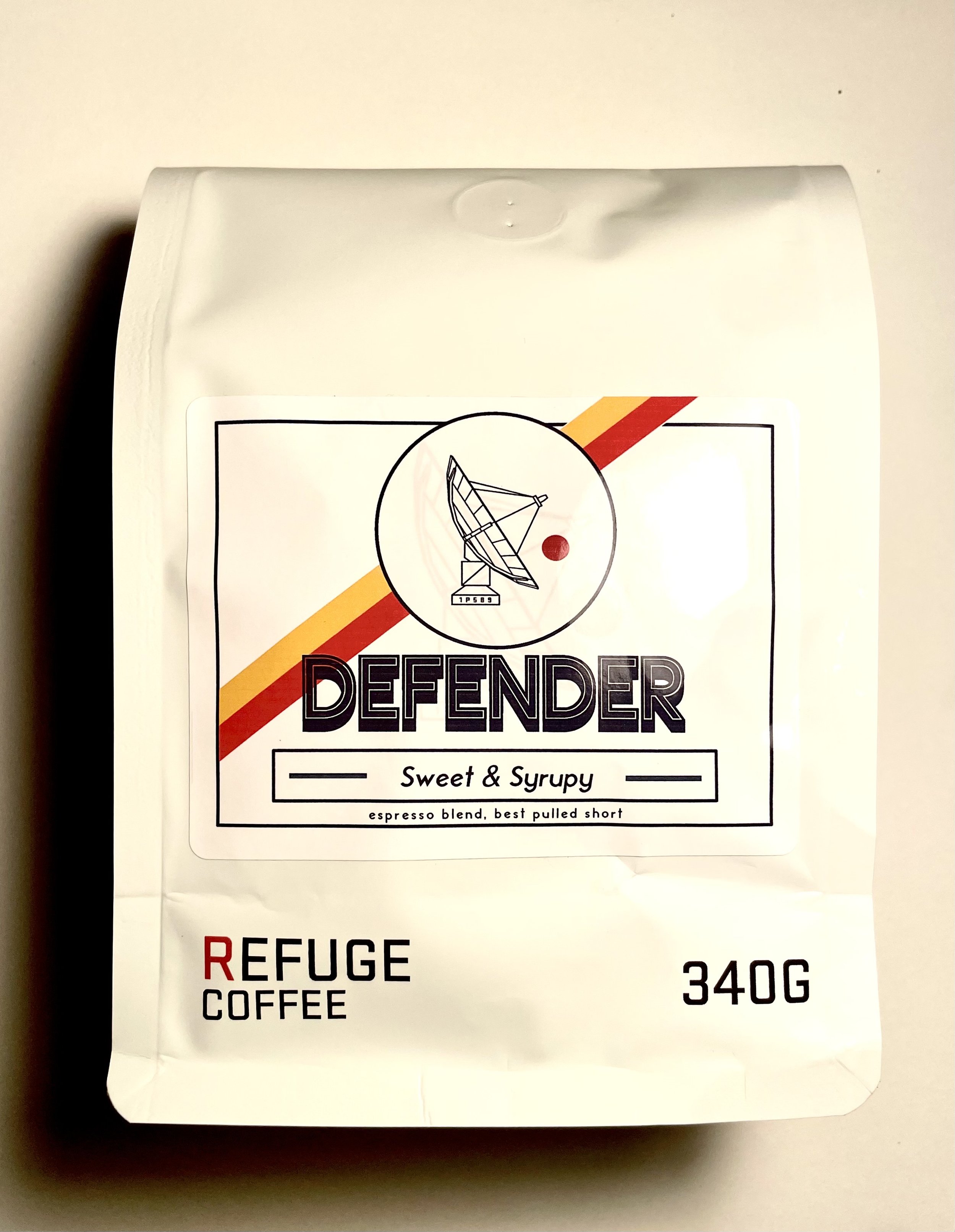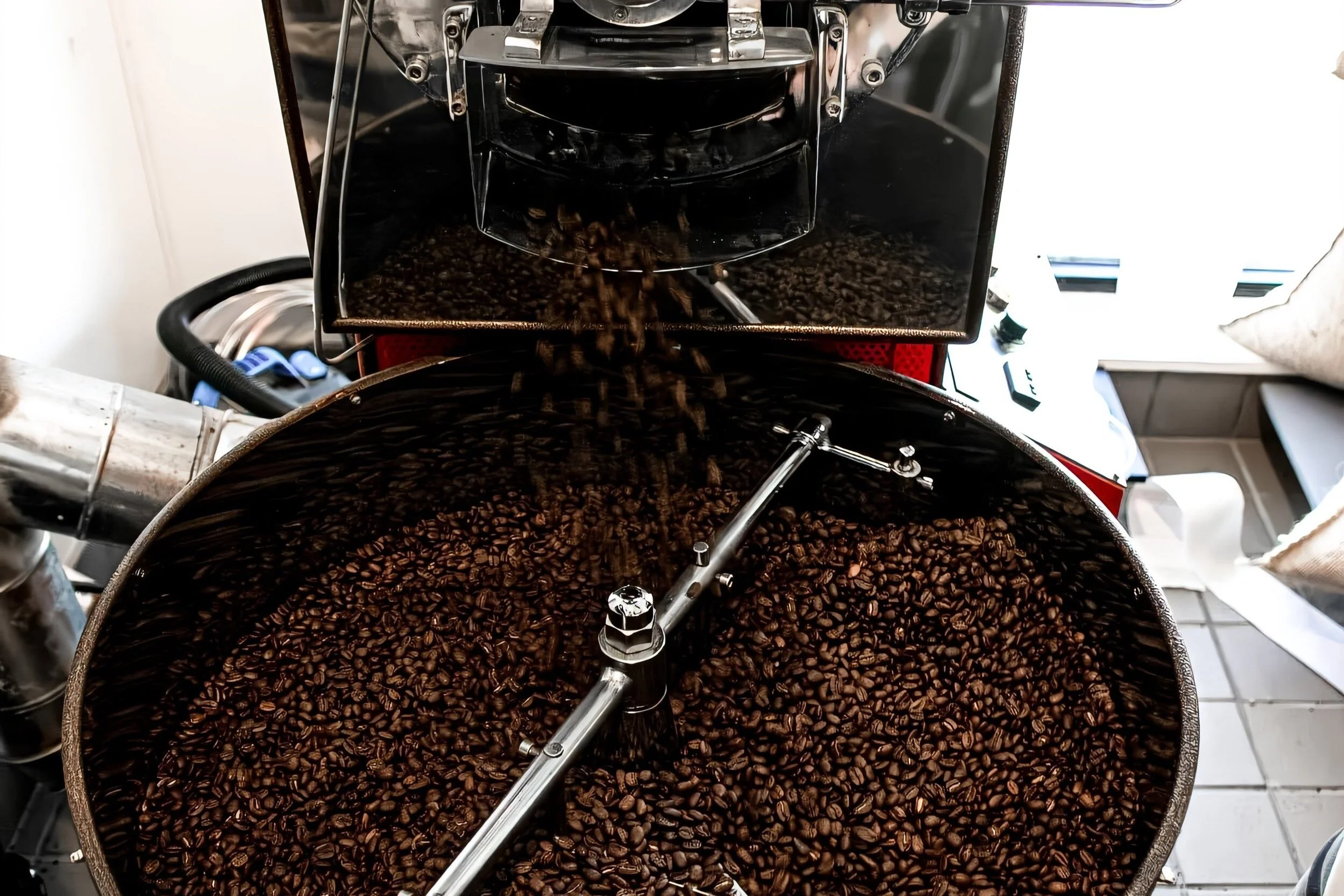Single Origin Vs Blend Coffee: Complete Guide
Single Origin Coffee will name the Country, Region, Farm, And/Or Town the Coffee is From.
Brazil Mogiana Single Origin / Peanut, Cocoa, Grape Jelly / Starting at 19.00
Single Origin Vs Blend Coffee
Have you ever noticed the words “single origin” on a bag of coffee or heard a barista say “coffee blends”? What does all of that coffee jargon mean?
In this article we will discuss the meanings of these terms and go over the history of single origin vs coffee blends.
What is Single Origin Coffee?
Single origin coffee is one coffee from one place pulled into a cup. In that cup we are able to highlight all of the good and all of the bad notes of that specific region.
An example would be our Guatemala Huehuetenago, where we get all of the bold citrus and acidic notes while lacking the body and texture common with Brazil or Colombia.
Three Ways to Source Single Origin Beans
There are three main ways to source single origin beans.
Directly From a Coffee Farm
When partnering with a coffee farm to buy beans, you can ensure that you have a direct trade with the farmers, meaning nothing is happening to the coffee that you don’t know about. This way is often more expensive as the farmers have less financial support to cut down the costs of the beans and if shipping mistakes are made there is less help getting support.
A Whole Region
Sometimes, beans from one farm will be bold and delicious at first and die off quickly leaving a sad aftertaste.
But beans from another neighboring farm could have the opposite; delicious bold aftertastes.
By roasting and brewing these beans together you can create a fuller-bodied cup of coffee without losing the qualities of the specific region.
A Coffee Cooperative
These co-ops are made up of many small farms. They help support each other when they need money, equipment, or more hands. By buying through a co-op you can expect more affordable coffee without a decrease in quality.
A Coffee Blend is a blend of 2 or more Single Origins that are crafted to give a specific taste curated by the Roaster.
Defender Espresso Blend / Guatemala, Colombia, & Brazil / Sweet & Syrupy / Starting at 19.00
What is a Coffee Blend?
Nowadays coffee blends are created by taking different bean origins and blending them together.
This is often done for several reasons such as to balance flavor, create consistency between batches and create fun new flavor profiles not available through single origins.
Ben Anderton, the head roaster at Refuge Coffee, sat down to explain the need for coffee blends. This is what he said:
“If I am to buy Colombia from one region and one farmer and 2025 is a bad year for his harvest, well, the coffee now goes bad from that region. Instead of getting an 8 out of 10, I get a 7 out of 10. But if I have another coffee or another two coffees, in the case of our Defender Blend, Brazil is still an 8 out of 10 and Guatemala's a 9 out of 10. So instead, we still have an 8 out of 10 rather than a 7 out of 10 cup of coffee.”
Flavor Differences Between Single Origin Blends
Typical single origins have tasting notes unique to those areas; for example, African coffees tend to be acidic with fruity notes while Latin American coffees are often mild in acidity with spice notes.
Now, some roasters like to create blends that will specifically create tasting profiles like chocolate and orange or fruit and peanut butter.
At Refuge coffee, we roast our blends to taste, allowing the beans to show their personalities instead of roasting with a specific flavor in mind.
Pros and Cons Between Single Origin and Blends
Single Origin:
Pros: Cons:
Easily traceable Inconsistent from cup-to-cup
Unique flavor Only available seasonally
Story of farmers and beans
Blends:
Pros: Cons:
Reliable Flavor Less distinctive
Balanced Profile No “story” behind beans
Easier to pair
How to Choose Between a Single Origin or a Blend Based on Your Preferences
Related Article: How to Pick Coffee Beans: A Pro Guide
Fresh Roasted Coffee from Refuge Coffee, Fairhope Alabama
Not sure how to choose what kind of beans you want to buy next time you’re at a specialty coffee shop? Here's a quick overview to help.
Do you like specific tastes that can be repeated easily? Or something that blends well with cream and sugar? Then a coffee blend may be the perfect option for you. Since blends are easily maintainable, you can have the same cup almost every time.
If you’re looking for something nuanced and unique, then single origins are the way to go. These beans will be different from year to year and even from cup to cup. These beans highlight the flavors of singular areas in the best way.
Still can’t decide? Why not both! Most of our baristas at Refuge Coffee love it all and buy it all for the perfect at home coffee.
Whether you’re an at-home roaster or the average customer, it’s important to know that you are buying ethical beans. Stop by your local roastery, like Refuge Coffee, and ask how they source their beans.
Who knows, maybe you’ll learn even more about coffee.
Brewing Tips for Single Origin and Blend Coffees
The ideal brewing temperature of coffee water is between 195 degrees and 200 degrees. Too hot and you risk burning the beans and losing any flavor. Too cold and you create a weak and sour cup of coffee.
Finding the perfect grind size for beans can be very difficult. You don’t want to stray too fine and risk under extracting or too coarse and risk over extracting, both can leave unpleasant flavors in your mouth.
Pour-Over
This brewing method requires procession and attention to detail. By slowly and evenly extracting coffee, pouring hot water over freshly ground beans, you can highlight citrusy and floral notes. This method is great for single origins and light roasts.
French Press
Instead of slowly introducing water to grounds, this method does the exact opposite. The french press submerges grounds in water allowing more oils and flavor to extract from the beans. This pulls out darker chocolatey notes.
Drip
Drip is the active person's best friend, by being convenient and fast. Drip is similar to a pour over, but doesn’t introduce water as slowly or as controlled. The result? A more consistent cup with less effort.
Conclusion - Single Origin vs. Blend Coffees
Knowing the difference between single origin coffees and blends elevates your coffee experience, not only can you curate your flavors for the day, you can also share the knowledge you’ve learned with others and bond over a shared enjoyment of the world’s favorite beverage.
Related Article: How Coffee Changed The World



